Gamebox 2.0: Games of September 2023
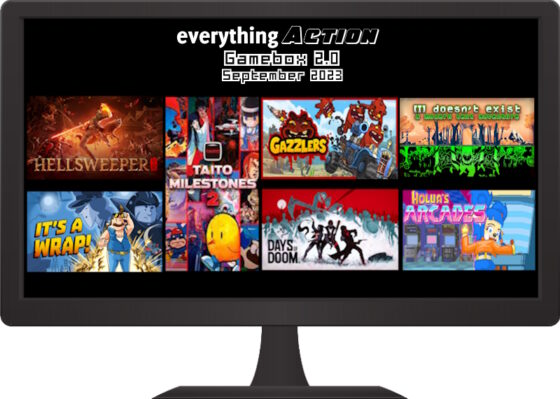
As we get ready for spooky fall fun, we checked out a new batch of games this September. We dug into the existential dread of (i) doesn’t exist, blasted away at the fiendish Gazzlers in VR, puzzle platformed through 80s action movies in It’s A Wrap, played arcade-style games in two new collections, and more! Read everything we played this month below in the Gamebox 2.0: Games of September 2023.
Hellsweeper VR (Zach): Coming from Vertigo Games and Mixed Realms, Hellsweeper VR is a rogue-like VR action game where you play as the Hellsweeper, a damned warrior who is tasked with battling errant demons that loose in the various realms of Hell. Each run of Hellsweeper starts with you choosing your starting weapons, which is a mix of melee, magic, and ranged weaponry. One very cool feature of Hellsweeper is that it lets you choose the motion for how your selected weapons are summoned, which lets you put your preferred weapon on a motion that feels best to you and customize your playstyle. A lot of other VR games come with these action preprogrammed and you have to adapt to it, so this customization is welcome.
The weapon summoning feels great every time you do it and you can summon as many swords, maces, pistols, fireballs, etc. you want without limit and you can mix and match between both hands, so you can go in with dual pistols, all fireballs, a sword and mace, whatever you want. There are also other abilities like telekinesis along a with brief slowdown mechanic and you can combine these powers and your weapons for new ways to combat your foes. There are tons of options at your disposal, which is fantastic, but it does take a bit to remember exactly what you need to do for each action, and, in the heat of battle, it’s easy to get flustered and forget or do the wrong motion. Once you do get the hang of it though, you feel like an absolute ninja of death as you fly around, summon weapons, grab objects, and take down enemies.
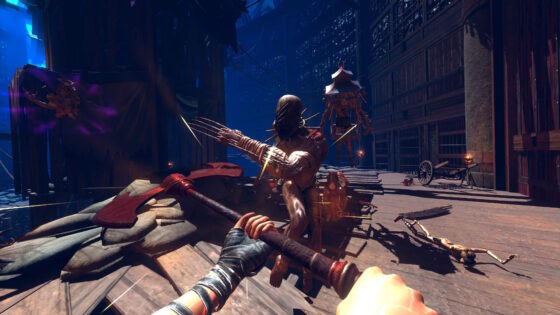
You also have a lot of movement options, including advanced moves like somersaulting and wall running, and there are different levels of comfort levels to help prevent motion sickness if you need them. The game has a cool art style with some grotesque enemies that feel a bit Dark Souls/Elden Ringesque and the world has a similar vibe as well, except it’s all way more fast-paced and frantic than the gameplay in those games. In rogue-like fashion, you try to make your run last as long as possible and, when you die, you return to the hub area where you can try again in a new run. Each stage of the run has different objectives, ranging from just surviving for a certain time, solving a puzzle within a time limit, killing a certain number of enemies, etc. and the variety keeps things interesting and you never know what to expect in each stage. You find upgrades, weapons, and other items in each stage that can boost your abilities, but you’ll lose all of them when you die. If you like games like the modern Doom games and the rogue-like gameplay loop, definitely strap on your headset of choice and check out Hellsweeper VR. It’s out now on Meta Quest 2, Steam and PSVR2.
TAITO Milestones 2 (Chris): Taito and ININ Games released a new volume of arcade classics from the 80s and 90s in the TAITO Milestones 2. This collection of arcade hits has a mix of shoot’em ups, fighting games, and adventure platformers. The games are converted to show its retro visuals and gameplay, with new additional modern features like save states and online scoreboards. Here is a breakdown of every title within the collection.
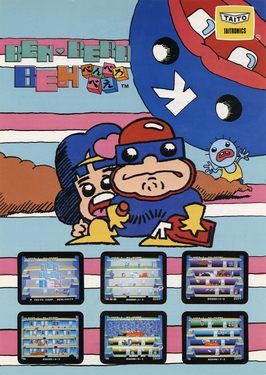
Ben Bero Beh (1984) – Play as the masked superhero Ben on a rescue attempt to save his girlfriend Nao-chan from a burning apartment building. It’s a race against the flames as the apartment build gets more unstable, creating multiple hazards and spawning fiery traps. Ben Bero Beh is one of those simple-to-pick-up but hard-to-master titles that was designed to eat up quarters. The game’s challenge comes from the multiple objects to keep a watch as Ben moves around. There are sentient flames that travel up and down the level, creating flaming barriers that Ben has to put out, which makes Ben very vulnerable to debris falling on him or something sinister grabbing him from a door. There are a lot of visual gags happening in the levels which gives the game a very poppy tone. A level can be completed in a few minutes and there are over thirty levels to complete, so it’s an endurance challenge to try to finish the whole game in one sitting.
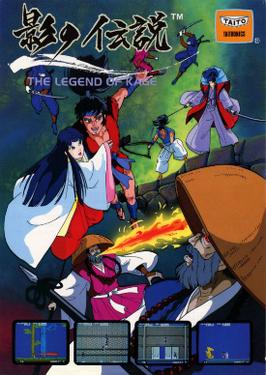
The Legend of Kage (1985) – Set in the Edo period of Japan, the Iga Ninja Kage is on a rescue mission to retrieve Princess Kiri from Yukikusa Yoshiro and his demonic army. Kage must battle his way through forests, castle walls, and a mansion, cutting down all those that stand in his way. The Legend of Kage is a fast-paced platform that has dangers coming at Kage from all angles. The game relies on being quick thinking, staying still usually leads to a quick death. Some gamers may remember the NES port of The Legend of Kage, but nothing beats the arcade’s presentation. The graphics and music are far better than the NES version. Since the main objective of the game is to just rescue the princess, there aren’t any boss fights. Most common enemies can be avoided since it doesn’t impact anything by the score. This game can be sped through if you know when to attack and dodge, so the gameplay time can be kind of low.
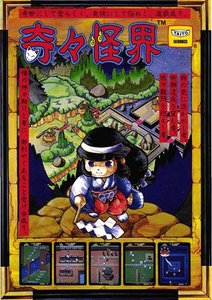
Kiki Kaikai (1986) – Set in Feudal Japan, the player takes up the role of the Shinto shrine maiden Sayo-chan. A group of youkai have kidnapped the Seven Lucky Gods and it’s up to Sayo-chan to rescue them. Kiki Kaikai is the precursor title in the Pocky & Rocky series that Japan. This game didn’t have a big following until the sequel game came to the SNES. The game features the same twin-stick controls that allow the player to show from different directions while moving around the screen. There are power-ups that help increase Sayo-chan’s powers and range. There are eight stages, each that ends with a boss fight that traps Sayo-chan in an arena fight. This title is a must-play for Pocky & Rocky fans who have not experienced the original in arcade form.
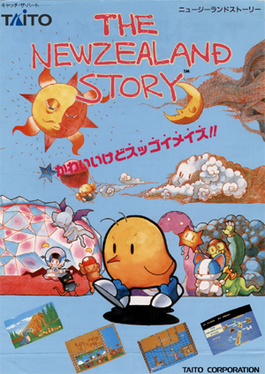
The NewZealand Story (1988) – The player controls Tiki, a kiwi who must save his girlfriend Phee-Phee and several of his friends who have been kidnapped by a blue leopard seal. The NewZealand Story is something like a dungeon crawler with big maze-like designs. The goal of each level is to find the exit point, but there are lots of pathways to navigate through. There is a mini-map that indicates where Tiki’s friends are located, which must be found before the exit is unlocked. There are shortcuts and ride-able vehicles that will bring Tiki faster through the levels. Tiki can also find weapon power-ups that can make clearing rooms a little easier. However, Tiki can only take one hit, so every fight can’t be reckless. There is a lot of depth to The NewZealand Story that you wouldn’t expect from just character designs and colorful backgrounds. The game has a long play time as the levels are big and require a lot of exploration.
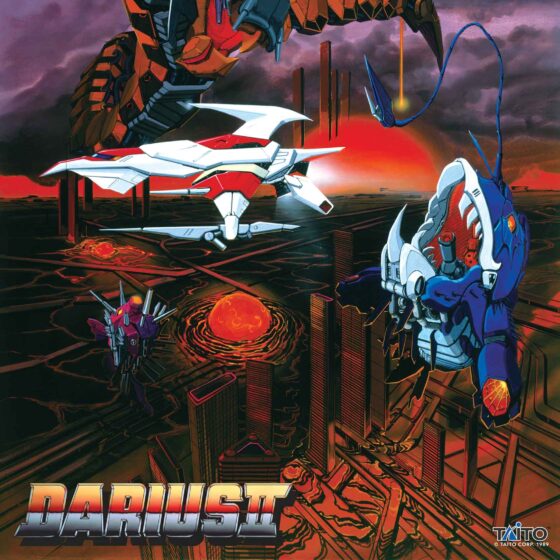
Darius II (1989) – Two Silver Hawk pilots from the colony planet Darius venture to Earth to combat the invading alien Belser Army. Darius II is a classic Shooter’em Ups with familiar mechanics but has unique powerup mechanics. These power-ups have three different colors, and each gives the ship different abilities, and can only be dropped when taking enemies in a certain order. There are branching paths that let players choose the next type of level design they will encounter next. This version of Darius II is a port of the 3-screen arcade edition that gives the game a greater wide-screen presentation. This version is a great port that captures the scale of the chaotic bullet-filled space and has great challenging gameplay.
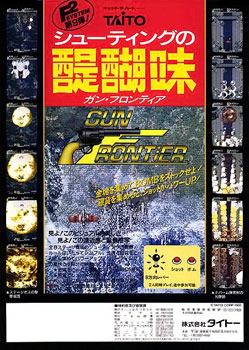
Gun Frontier (1990) – Set in the distance future on the planet colony of Gloria, invading space pirates known as The Wild Lizards have come to Gloria. They are terrorizing the colony’s inhabitants and have begun to harvest the planet’s resources. Now a small squad of cowboy ace pilots take to the sky to fight back the invaders. Gun Frontier is a vertical Shoot’em up that makes use of the foreground and background visuals, creating a depth that the player is taking out enemies from land and air. Enemies will drop off coins and gold bars that can be collected for increased firepower and area-clearing bombs. There are six levels, each with a gun-shaped boss battle that will have players hugging every available space to avoid incoming projectiles. It’s a fun game concept that mixes Western themes and sci-fi elements that not many games attempt.
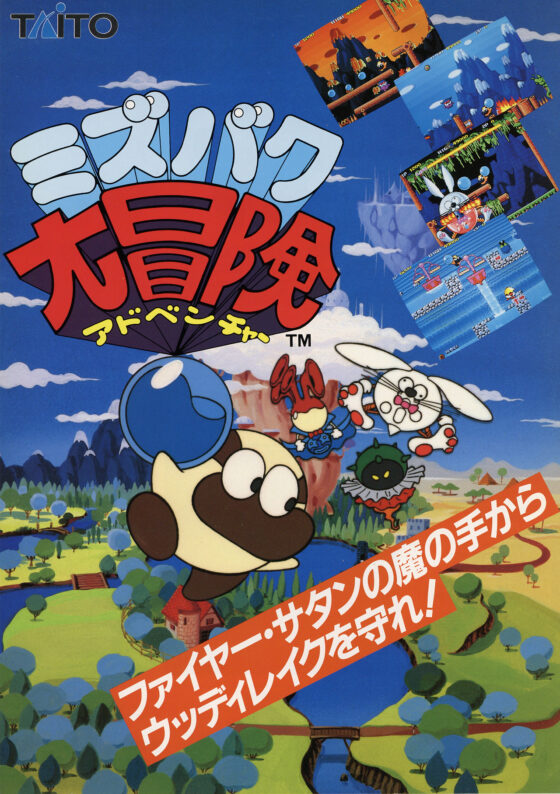
Liquid Kids (Mizubaku Adventure) (1990) – Play as Hipopo the hippopotamus as he fights to protect the peaceful Woody Lake from the evil hands of Fire Satan. Armed with water magic, Hipopo will soak and kick his enemies to save his friends! Liquid Kids is an action platformer title that plays like a mix of Megan Man and Bubble Bobble. Hipopo has to navigate through tricky obstacles and has a weapon that he can charge up. The water orbs are thrown and bounce around, creating moving bodies of water once they pop. There are fires that enemies create that can be extinguished by the water. Enemies that are drenched in water become slower, and with enough hits, become vulnerable for Hipopo to deliver a kick to finish them off. This game feels like a spiritual successor to NewZealand Story in terms of its character designs and a few mechanics. However, Liquid Kids has a much fast-paced intensity that makes it very fun to hurl water orbs and see it splash around everywhere.

Solitary Fighter (1991) – Step into a fighting tournament as an underground fighter from the 1950s. Many will fight for prizes, money, and fame, but only one can be the strongest to win it all. Solitary Fighter is a fighting game and is the sequel to 1989’s Violence Fight. The fighting mechanics have basic kicks and punches, but the game has a bit of a delay between inputting moves and the character reacting in time. The specials are very simple to do and change slightly based on the character you play. There is also an energy bar that builds up with each move, so it sort of stops you from spamming attacks. There are a few memorable elements that make the game interesting to try, such as random NPCs that join the fight to attack the more dominant fighter and the bonus stage where you fight a bear.
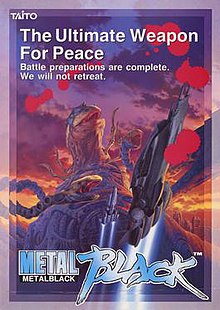
Metal Black (1991) – Set in the future where Earth is on the verge of collapse due to invading alien forces, a rogue pilot takes the experimental space fighter to defeat the alien race and save humanity. Metal Black is a vertical Shoot’em Up plays like a mix of Darius and Gun Frontier. It features a power-up system that lets the player collect Newalone energy particles that upgrade the ship’s attack. Enemies drop or leak out Newalone energy, so it’s easy to quickly build up power levels after getting hit or colliding. One of the cool features is the cut scenes with the sprite work that start simple but start to feel like the programmers were trying all the effects by the end of the game. The ending stage in particular has a few oddly distracting visuals in the backgrounds that make you forget what game you are playing.
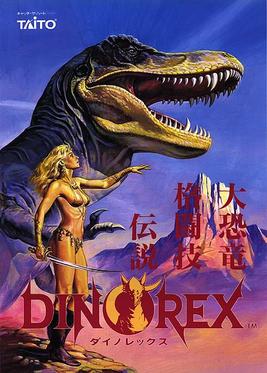
Dinorex (1992) – Set in the prehistoric era, dino-timers command their dinosaurs to battle each other in order to win the title of King Dinorex. Dinorex is a fighting game that lets you control one of seven giant-sized dinosaurs. Instead of kicking and punching, the dinosaurs have tail swipes and biting to attack. Depending on the character, a few special moves will let the player dinosaur do quick dash attacks or high leap attacks. Special moves can be charged by roaring during combat, but it makes you vulnerable to the enemy’s quick attacks. It doesn’t help that the controls feel very delayed and floaty, like have to think 2 seconds before you want to attack in order to land a hit. Dinorex has some cheap opponents that will spam attacks that you end up just being just as repetitive to gain an edge. However, the visuals are fun and the concept predates Primal Rage. Plus the bonus stages where you terrorize a town is campy fun.
TAITO Milestones 2 brings together a decent selection of fan favorites and oddities that you can’t find in any regular arcade. Some of these titles were Japanese exclusives that rarely got imported. This collection is a great way for new gamers to discover game history and for retro gamer fans to revisit hidden gems. Games like Kiki Kaikai and Liquid Kids are fun titles to enjoy that didn’t have too many North American ports. Dinorex is a fun novice game to show others. Some games show their age with limited game design, like The Legend of Kage or Solitary Fighter. However, there is enough gameplay in the collection to keep players busy for hours, especially if they want to master a perfect play-through. TAITO Milestones 2 was released exclusively for Nintendo Switch on August 30th.
Gazzlers (Zach): Also out in VR this month, Gazzlers from Odders and Bolt Blaster Gamers is an extremely fun arcade shooter. You play as a pilgrim trying to journey the Temple of the Machine God across the desert world of Gingko. Unfortunately, the insane Gazzlers are not pleased about your journey and are coming after you with various mechanical vehicles in an all-out assault. You need to defend yourself and your locomotive from the Gazzlers, blasting away at them and blocking their shots. If you’ve played VR games like Space Pirate Trainer, you’ll feel right at home in Gazzlers, as it has the same arcade-style combat and gun/shield mechanics. You fire away at the Gazzlers with your right hand and can raise a shield with your left. You can’t have your shield out constantly because it will burn out and you also need to drop it so you can grab ammo for your gun, which adds to the frantic action of the game. You make your way through each area in different waves and after each wave, you can select an upgrade for your weapon that can change the firing rate, add different properties, increase ammo, etc. With all the Gazzlers you take down, you are also building up scrap. When you die, you can use your accumulated scrap to buy permanent upgrades and you can launch into another run.
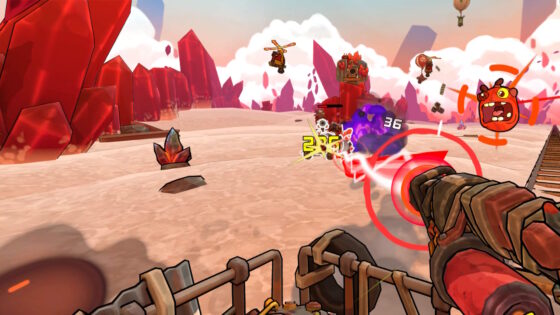
The game is full of personality and has a great comic book/cartoony art style that feels like a mashup of Borderlands and the Rabbids, with the Gazzlers being extremely well-animated and amusing enemies. They have all sorts of mechanized assault vehicles and there are touches like a Gazzler hanging off the bottom of a flying contraption that adds to the cartoony charm. Each vehicle type has a weak point, which is crucial to figure out so you can dispatch the various enemies faster. The game plays fast and furious and is a fantastic rail shooter/shooting gallery that will keep you playing for “just one more round”. Gazzlers is a ton of fun to play and if you’re looking for an arcade-style shooter with some rogue-like elements, definitely check it out now on Meta Quest 2, Pico, Steam, and PSVR2.
It’s a Wrap! (Zach): Right up our alley with its homage to various 80s genre movies, It’s a Wrap! from AMC Games and Chanko Studios delivers an incredibly unique puzzle/platforming experience. You play Johnny Rush, a not-quite-washed-up movie star who is starring in three different projects, like an Indiana Joneseque adventure movie. Each level of It’s a Wrap! is a scene from the movie and you need to adjust the special effects of the scene so that you can navigate Johnny through it without incident. You are presented with the timeline of the scene and you can slide bars tied to each of the scene’s elements to make them occur earlier or later on the timeline. You are given the script at the beginning of each scene, which hints at what the proper alignment of the scene might be.
When you think you have the elements lined up correctly, you can call action and then you directly control Johnny through the scene. If you are hit by an obstacle or element of the scene or run out of time, you have to try again. It almost feels like the team behind this game took the old Stuntman games and turned them into a puzzle platformer, as most of the scenes require a specific alignment of elements and then a precise run through the level from Johnny. Be prepared to try each stage multiple times as you adjust the scene on the timeline and then test it as Johnny.
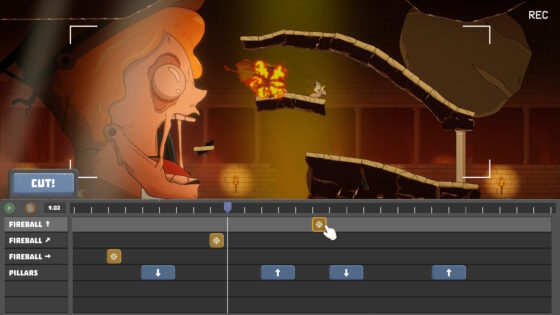
The levels start fairly simple with only a few elements to control but they quickly ramp up in difficulty, adding elements that are locked in place, elements that are on a loop, and more. It can get a little frustrating at times because of how precise the timing needs to be at times but you can instantly start and stop the scene and the timeline is well-implemented and allows you to really see how each element will work and slide things around as needed. If you get really stuck, there is a hint system that will add additional information to the script to help you figure out the timing needed. There are three movies with multiple stages in each and you unlock the subsequent movie after beating a certain amount of levels in the previous stage. The game has a great cartoony art style that feels like TinTin and lots of funny dialogue with jabs at the movie-making process and the movies the game is paying homage. If you’re looking for a unique puzzle platformer, It’s a Wrap! is worth checking out, but be prepared for a lot of trial and error as you work your way through each scene. It’s out now on PC and Nintendo Switch.
I Doesn’t Exist (Zach): Coming from DreadXP and LUAL Games, [I] doesn’t exist is a surreal spin on classic text adventure games, like Zork. [I] doesn’t exist starts as a fairly typical text adventure game where you are guiding your avatar on screen via commands to solve various puzzles in the forest setting of the game. The opening puzzles are very intuitive to figure out but once you reach what seems like the goal, unlocking a door, the game reveals its true narrative, which is that the avatar you were controlling is seemingly self-aware and has been tortured by control being forced on it. What follows is a strange journey that switches up the gameplay and graphics in various ways that really need to be experienced without being spoiled. Most of the enjoyment is being shocked and surprised by what the game throws at you next and how radically different things get, whether in the gameplay or the graphic style.
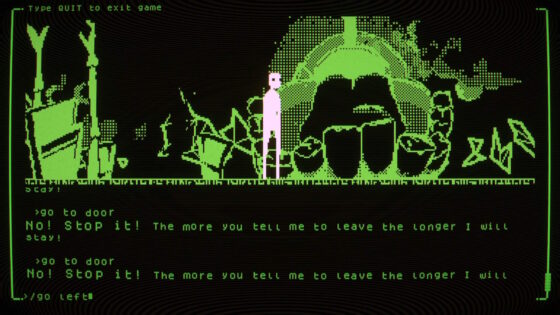
The game features excellent writing, as you would expect from a good text adventure, and it features a unique “Natural Language Processing” tech that allows you to type in more natural phrases than the strict “use x on x” style of traditional text games. You can write actual responses and, most of the time, the game’s characters will answer in an equally natural manner, which adds greatly to the idea that you are interacting with a self-aware AI character. There are some areas where it’s a bit unclear how you need to progress but the answer is usually to keep asking and talking to the characters until you eventually make it to the next big story beat. [I] doesn’t exist is an incredibly unique gaming experience that will appeal to fans of old-school text adventures along with anyone who wants to experience a surreal, slightly creepy narrative. The game is coming soon to Steam but there is a demo you can check out on Steam right now.
Days of Doom (Zach): Coming from Atari and SneakyBox, Days of Doom is a rogue-like strategy game that throws you into the post-apocalyptic wasteland. Trying to reach the safety of the Sanctuary, a mythical place of safety, you set out in a bus across the wasteland, battling zombies and deadly raiders along the way. At the start of each run, you can select a team of survivors, who fall into various classes like the melee-based Thrasher, long-range Gunslinger or magical classes like the water-controlling Hydromancer. Each class has drastically different skills and different skills can complement and enhance others, so your team makeup is critical to your success.
Once your team is selected, you set out into the wasteland, making your way across various points on your way to an especially dangerous encounter that will let you reach the next area of the map. Unlike a lot of rogue-likes that only give you a few options for your route, Days of Doom lets you choose wherever you want to go at any time, the only consideration being that you have enough fuel. You can run straight toward the boss encounter but if you explore more you can find additional items, weapons, and other things that could make the difference between winning and losing.
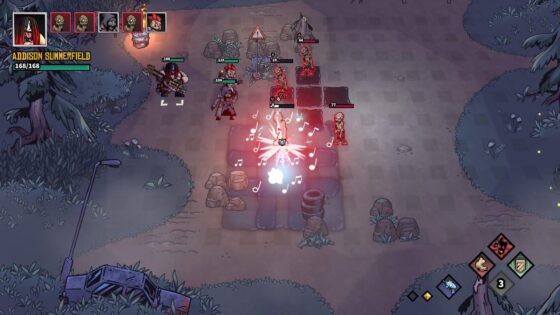
Once you are in a combat encounter, you see the battlefield from a slightly slanted overhead view. You can arrange your squad along the left side of the arena to start and then you proceed in turn-based combat. Each member of your team has two actions per turn, which can be moving, attacking, guarding, or using their special ability. The goal is to eliminate all the enemies and there can be some overwhelming numbers of zombies at times. There are obstacles on the map that can help or hinder you, depending on how you use them tactically, like oil barrels that can douse a group of enemies in oil, opening them up to be set on fire with the proper attack or ability, which adds some fun additional options to the attacks your squad members have. Your squad also has passive abilities that need to be taken into consideration as well, like the Thrasher giving anyone near them a defense boost, so positioning and moving your squad effectively is key.
You don’t heal after each battle, so you either need to try and avoid taking too much damage or find and visit the one rest area in each section of the map to heal. If all your squad members die, you return to the hub, where you can recruit new members and head out again. You level up and earn currency after each run that you can use to upgrade buildings in the hub, which can allow you to get new and different types of squad members and get permanent upgrades that will help you proceed further in each run. The game has a great cartoony art style with a lot of personality and humor, like one of the classes being a heavy metal guitarist who doubles as a spell caster casting AoE spells with chords. The game previously had a mobile version but the new version is out now on PC, PS4/5, Xbox Series X/S, Atari VCS, and Nintendo Switch.
Holua’s Arcade (Chris): Simulate playing at a tropical arcade in Raven Travel Studios’ Holua’s Arcades, a collection of four retro-inspired arcade games delivered in one package. You play as Lyn, a ninja gamer spending her time in Holua’s Arcades. Lyn is leisurely playing the games. exchanging coins for tokes and getting health drinks at Holua’s. There is no major plot to Lyn’s arcade time, she can play any game in any order, as well as explore the area outside of the arcade to find more coins to trade for tokens. However, the games Lyn plays are so accurate to arcade gameplay that they seem like almost missed classics. Here is the breakdown of each arcade featured:
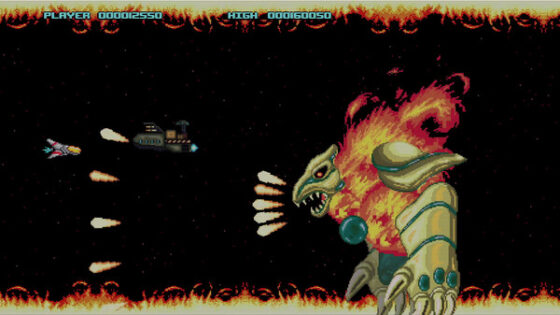
Crescent Moon – “A fast and canonical horizontal shoot ’em up to instantly jump into the action! Destroy the army of Trixion, the cosmic tyrant who wants to conquer Holua! Collect and swap five different weapons, multiple directional shot bonuses, and optional pods that assist you in the battle. Avoid and memorize environment traps and face huge bosses at every stage. Find secrets hidden here and there. The scoring system rewards your ability to collect multiplier bonuses without losing a life.”
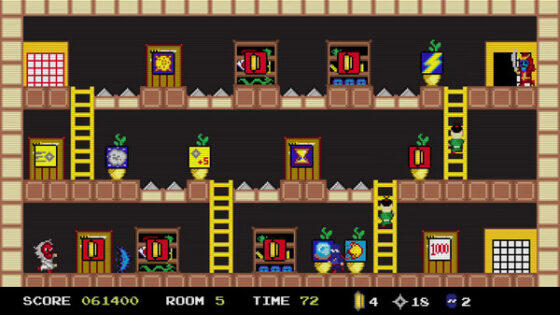
Heist Of The Ninja – “Help Koji the ninja in his heist mission, seek the rooms, and steal treasures without getting caught by the guards! You can jump the obstacles and shoot the enemies; digging the furnishings always rewards you with something! The mythological single-screen paradigm comes back armed with shurikens and other special bonuses!”
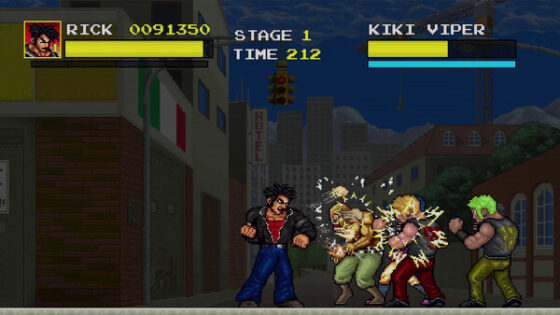
Don’t Mess With Rick – “After being kicked out of his mob family by his father, Rick seeks his revenge by beating all its members and aiming to become the new boss. While not engaged by typical bonus stages and cutscenes, the player is armed with a rich combat system made up of combos, clinch, projections, parries, and counterattacks, as well as handy and throwing weapons like knives or nunchucks. Fight on your way through huge bosses, replicant ninjas, dangerous traps, rabid dogs, and … the fury of your own bloodline!”
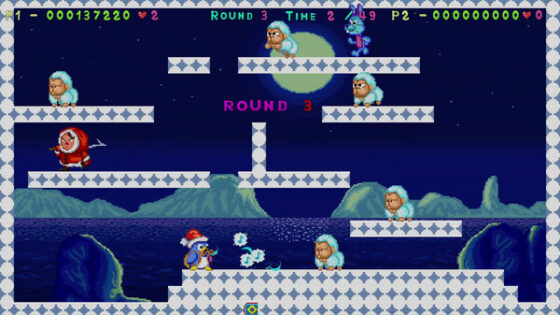
Peng Peng – What about a cute game? A single-screen platformer game featuring a local co-op mode? Like wiping out all the monsters to move on to the next round and collecting a lot of fruits and sweeties? Yeah, Peng Peng dives you back into those feelings, and it’s designed for every kind of player: casuals, speed-runners, and score-catchers. The gameplay lets you solve each round by using speed or tactics. Two different players coming to the same point can gather extremely different scores depending on how they approach the game. Set the action across four different worlds to rescue the Frost Orb kidnapped by evil Von Pega! Try to dig out the secret rooms and reach the hidden ending sequence!”
Veteran arcade gamers can see the inspirations of each title, which have been made into fully playable content. Don’t Mess With Rick is a Final Fight style beat’em up that has a long playtime that you think and offers a good challenge than being a mindless brawler. Peng Peng is like Snow Bros or Bubble Bobble and has a simple yet accidentive puzzle action gameplay. Crescent Moon is like R-Type, but some of the backgrounds can be distracting, which means a lot of accidental crashing. Heist Of The Ninja is something close to Dig Dug that makes great use of the limited space to make the game feel very intense.
The portions that focus on Lyn’s gameplay are fine, she behaves like a typical 2D action platformer and there is a small selection where you can beat up enemies. These parts serve as a small preview to Raven Travel Studios’ next upcoming title Fantasy Network. Raven Travel Studios nicely captures the small details to emulate the arcade look and feel of games that fit that peak 80s & 90s arcade era. There is great cover art of the games that highlights the main appeal of the games that look really great. Then when the game loads, it looks like a chipboard loading up. Each game has a distinct gameplay and visual style, with no simple reused art assets with slightly different game mechanics. Holua’s Arcades was released for Steam on September 1st.



